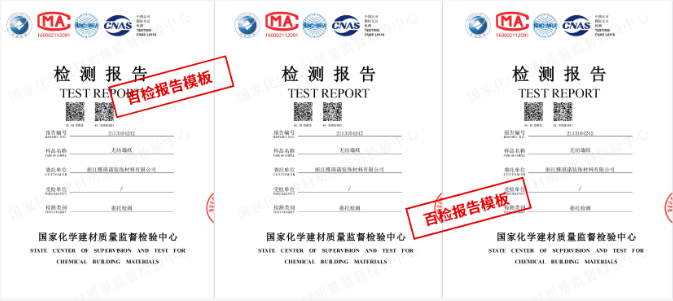
本文主要列举了关于舞台LED灯具的相关检测方法,检测方法仅供参考,如果您想针对自己的样品定制试验方案,可以咨询我们。
1. Visual Inspection: This method involves visually inspecting the stage LED lights for any physical damage, missing parts, or signs of wear and tear.
2. Color Calibration: Color calibration involves adjusting the color output of the LED lights to ensure consistency and accuracy in color reproduction.
3. Light Intensity Measurement: Using a light meter to measure the intensity of light emitted by the stage LED lights to ensure they are all emitting the same level of light.
4. Temperature Testing: Checking the temperature of the LED lights during operation to ensure they are not overheating and causing potential safety hazards.
5. Power Consumption Test: Measuring the power consumption of the LED lights to ensure they are energy-efficient and not consuming more power than specified.
6. Beam Angle Verification: Verifying the beam angle of the LED lights to ensure they are emitting light at the correct angle for the desired lighting effect.
7. DMX Signal Testing: Testing the DMX signal connectivity of the LED lights to ensure they can be controlled accurately via the lighting control console.
8. Flicker Rate Measurement: Measuring the flicker rate of the LED lights to ensure they do not flicker excessively, which can be distracting to the audience.
9. Insulation Resistance Test: Checking the insulation resistance of the LED lights to ensure they are electrically safe to use on stage.
10. Light Output Uniformity Test: Testing the uniformity of light output across all the LED lights to ensure consistent lighting throughout the stage.
11. Waterproof Testing: Testing the waterproof capabilities of the LED lights if they are intended for use in outdoor or wet conditions.
12. UV Emission Test: Measuring the UV emission of the LED lights to ensure they do not emit harmful UV radiation that could be damaging to the skin or eyes.
13. Dimming Curve Analysis: Analyzing the dimming curve of the LED lights to ensure smooth transitions between different light intensities.
14. Structural Stability Check: Checking the structural stability of the LED lights to ensure they are securely mounted and will not pose any safety risks during operation.
15. EMC Compliance Testing: Testing the electromagnetic compatibility of the LED lights to ensure they do not interfere with other electronic equipment.
16. Life Span Estimation: Estimating the expected lifespan of the LED lights based on their usage and environmental conditions.
17. Glare Testing: Testing for glare produced by the LED lights to ensure they do not cause discomfort or vision impairment to performers or audience members.
18. Remote Control Functionality Test: Testing the remote control functionality of the LED lights to ensure they can be operated wirelessly as intended.
19. Color Rendering Index (CRI) Measurement: Measuring the color rendering index of the LED lights to determine how accurately they reproduce colors.
20. Power Supply Voltage Test: Testing the voltage output of the power supply for the LED lights to ensure it is within the acceptable range for safe operation.
21. Heat Dissipation Efficiency Test: Testing the heat dissipation efficiency of the LED lights to ensure they do not overheat and degrade prematurely.
22. Sound Level Measurement: Measuring the sound levels produced by the cooling fans or other components of the LED lights to ensure they do not produce excessive noise.
23. Light Distribution Analysis: Analyzing the distribution of light emitted by the LED lights to ensure it is evenly distributed across the stage.
24. Voltage Ripple Test: Testing for voltage ripple in the power supply of the LED lights to ensure a stable and consistent voltage output.
25. Accessibility Inspection: Checking the accessibility of the LED lights for maintenance and repair purposes to ensure they can be serviced easily.
26. Power Factor Measurement: Measuring the power factor of the LED lights to determine how efficiently they convert electrical power into light.
27. Lighting Control Protocol Test: Testing the compatibility of the LED lights with different lighting control protocols such as DMX, Art-Net, or sACN.
28. Overload Protection Test: Testing the overload protection mechanism of the LED lights to ensure they can handle sudden spikes in power without damage.
29. Remote Monitoring Functionality Test: Testing the remote monitoring capabilities of the LED lights to enable real-time status updates and diagnostics.
30. Thermal Imaging Analysis: Using thermal imaging cameras to analyze the heat distribution of the LED lights and identify any hotspots or thermal issues.
31. Lighting Effects Verification: Verifying the different lighting effects and modes supported by the LED lights to ensure they meet the requirements of the stage production.
32. Power Surge Testing: Subjecting the LED lights to power surge tests to ensure they can withstand sudden increases in voltage without failure.
33. Fire Resistance Test: Testing the fire resistance of the materials used in the construction of the LED lights to ensure they meet safety standards.
34. Light Modulation Analysis: Analyzing the modulation of light output by the LED lights to ensure smooth and flicker-free dimming performance.
35. Energy Efficiency Assessment: Assessing the energy efficiency of the LED lights by calculating their power consumption and light output efficiency.
36. Thermal Management Inspection: Inspecting the thermal management system of the LED lights to ensure they are effectively dissipating heat and maintaining optimal operating temperatures.
37. Lighting Coverage Analysis: Analyzing the coverage area of the LED lights to ensure they provide adequate illumination for the entire stage.
38. Color Temperature Measurement: Measuring the color temperature of the LED lights to determine the color appearance of the light emitted.
39. Energy Star Compliance Test: Testing the LED lights for compliance with Energy Star requirements for energy efficiency and environmental protection.
40. Cable Integrity Check: Checking the integrity of the cables and connections used to power and control the LED lights to ensure they are not damaged or faulty.
41. Light Shielding Evaluation: Evaluating the light shielding capabilities of the LED lights to prevent glare and light spillage in unwanted areas.
42. Power Quality Analysis: Analyzing the power quality of the electrical supply to the LED lights to ensure a stable and clean power source.
43. Heatsink Efficiency Test: Testing the efficiency of the heatsink in dissipating heat from the LED lights to prevent overheating.
44. Lighting Flicker Analysis: Analyzing the lighting flicker of the LED lights to ensure they do not produce noticeable flickering that can affect video recordings or cause discomfort.
45. Impact Resistance Test: Testing the LED lights for impact resistance to ensure they can withstand accidental bumps or knocks without breaking.
46. Lighting Design Verification: Verifying the lighting design of the LED lights to ensure it meets the requirements and specifications of the stage production.
47. Hotspot Detection: Using thermal imaging to detect any hotspots or areas of excessive heat on the LED lights that may indicate a malfunction.
48. Wireless Connectivity Testing: Testing the wireless connectivity of the LED lights to ensure they can communicate effectively with the lighting control system.
49. Lighting Consistency Analysis: Analyzing the consistency of light output and color temperature across multiple LED lights to ensure uniformity in lighting.
50. Lighting System Synchronization Test: Testing the synchronization of multiple LED lights in a lighting system to ensure they can be controlled and programmed together seamlessly.
检测流程步骤

温馨提示:以上内容仅供参考使用,更多检测需求请咨询客服。


